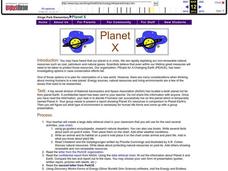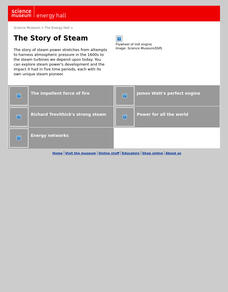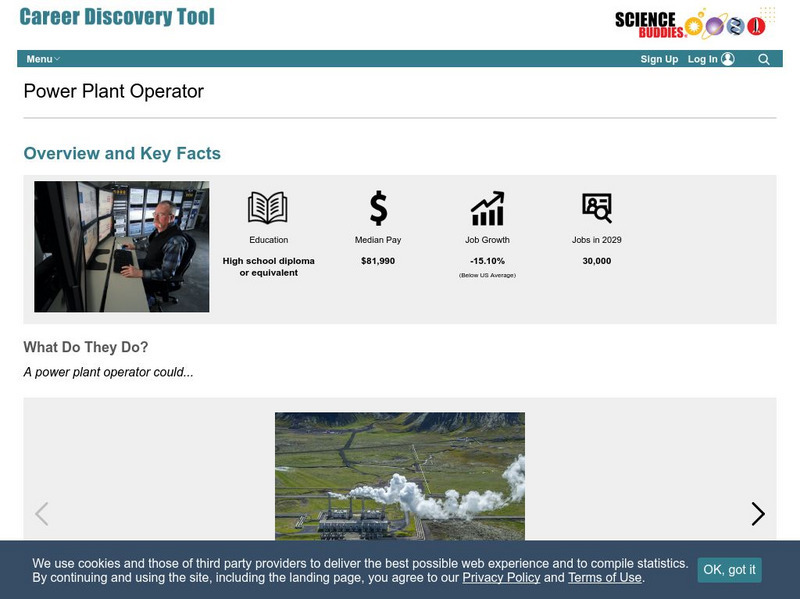Curated OER
The Awful 8: The Play
Students become aware of the cause and effects of different air pollutants. They present a play about the different pollutants.
Curated OER
Yam and Eggs
Young scholars gain knowledge about the different kinds of foods people eat around the world for breakfast. They look at a map and see if they can come up with reasonable answers as to why location may affect what people eat. Students...
Curated OER
Educator's Tools: Biodiesel Lesson
Students are able to determine whom Rudolf Diesel was. They discover that biodiesel is a renewable fuel. Students can define what renewable means. They get a clear usable defintion of what triglycerides are. Students get to see how...
Curated OER
Planet X
Students select a wide variety of presentation methods to compare Planet X and Earth. Students share these with their classmates. Students select other methods to present their ideas about a livable planet for human life forms. ...
Curated OER
Carbon Dioxide: The Heat is On
Students examine the greenhouse gases affecting the atmosphere. In groups, they participate in activities in which they examine the effects of heat on the atmosphere and phytoplankton. They research how the phytoplankton differ in warm...
Curated OER
Breaking News English: The Year 2007 to be the Hottest Ever
In this English instructional activity, students read "The Year 2007 to be the Hottest Ever," and then respond to 47 fill in the blank, 7 short answer, 20 matching, and 8 true or false questions about the selection.
Curated OER
The Environment: Vocabulary
In this environment vocabulary worksheet, students complete 12 multiple choice questions, then translate a set of "environment words."
Other
American Coal Foundation: Coal Energy Facts
Comprehensive overview of why coal is a major source of energy in the United States. Find out what coal is, what it is used for, how it is mined, where coal reserves are located, and how it is converted into electricity.
US Department of Energy
Doe: Fossil Energy: Education Start Page
Overview of the fossil energy industry (oil, gas, coal) with detailed descriptions of the processes and the work of the people employed in the industry.
Khan Academy
Khan Academy: Energy Through Time
The quest for energy has always been a balancing act. As humans have gained greater control over their environment, they've found abundant resources - and faced numerous challenges. This article traces the history of our quest for energy.
Energy4Me
Energy4me: Great Energy Debate
After learning about all the energy sources, students will be able to list and identify the economic and environmental advantages and disadvantages of them.
Science Museum, London
Science Museum: Energy Hall: The Story of Steam
A virtual exhibition on the history of steam power, with animated images of the first steam engines. Covers the history of coal mining and engine building by millwrights and engineers, and gives biographical information about early...
US Department of Energy
U.s. Department of Energy: Coal: Our Most Abundant Fuel
The U.S. has enough coal to last for the next 200-300 years. So why are we not using more of it? This article describes the different types or "ranks" of coal, the history, and the problems with burning coal for energy.
US Energy Information Administration
U.s. Eia Energy Kids: Coal
Easy-to-understand information on mining and transporting coal, producing it, uses of coal, and coal and the environment.
Other
Texas Comptroller of Public Accounts: The Energy Report: Coal [Pdf]
Chapter 7 of a report on the energy industry in Texas. It looks at coal, its history, its uses, its economic impact in Texas, consumption, mining, and the transportation of coal. The process of generating electricity from coal is...
Annenberg Foundation
Annenberg Learner: The Habitable Planet: Energy Challenges
With this resource, users join investigators in the exploration of humans' use of and dependence on the many energy resources. Learn about new technologies such as carbon capture and sequestration as an alternative to reduce our carbon...
Other
American Coal Foundation: Lesson Plan: Conserving Electric Energy
Lesson plan focuses on electricity use and energy consumption, while engaging students in a hands-on activity that helps them comprehend the effects of regulation and conserving energy resources.
National Geographic
National Geographic: Encyclopedic Entry: Non Renewable Energy
A good primer on non-renewable energy sources. Covers the overall advantages and disadvantages, and discusses the different types and their pros and cons. Includes a slideshow with captions.
Nature Conservancy
The Nature Conservancy: Renewable Energy
In this lesson, students explore solar and wind power-two important renewable energy sources.
US Department of Energy
Department of Energy: Cleaning Up Coal
Find out why coal causes pollution and several techniques that can be used to clean it up.
Energy4Me
Energy4me: Energy Sources of the World [Ppt]
Learn about the many different energy resources available from our Earth. Find out the pros and cons of each type: both renewable and nonrenewable.
Climate Literacy
Clean: Us Energy Production and Consumption
In this lesson students will compare and contrast regional energy production of 5 different US regions, including California, Illinois, Pennsylvania, Texas, and Washington. Students will also analyze production and consumption data of US...
Science Buddies
Science Buddies: Career Profile: Power Plant Operator
Keeping the power moving to houses and businesses is the job of the power plant operator. Whether the power comes from hyrdroelectric, nuclear, or coal energy, the power plant operator needs to know how to keep the turbines moving. This...
US Energy Information Administration
U.s. Eia Energy Kids: Nonrenewable Energy Sources
This resource provides information about nonrenewable energy sources. There is specific information about each of these energy sources, and lots of maps, charts, tables, and graphs to further the understanding.


















